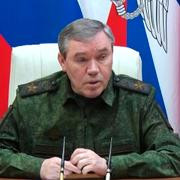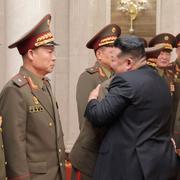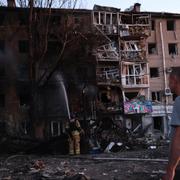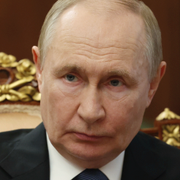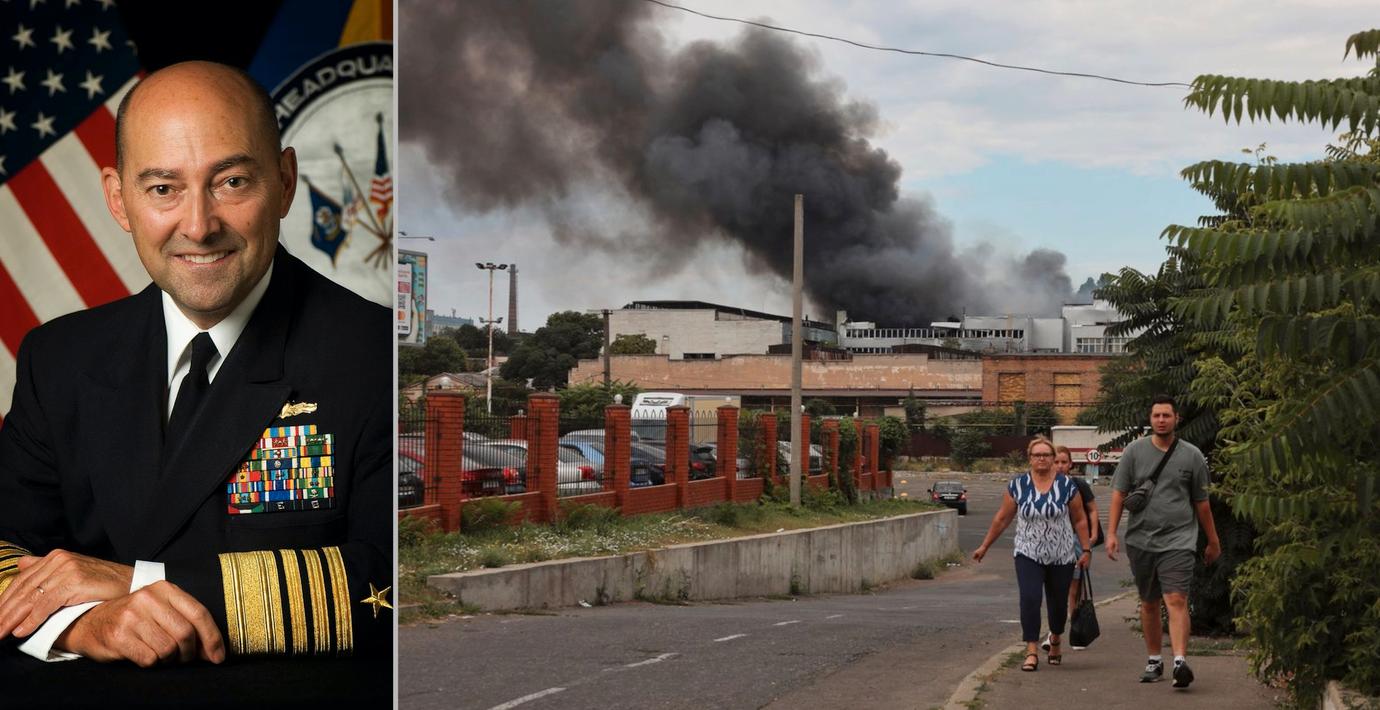
Tidigare Natobefälhavare: Kriget i Ukraina lär bli en frusen konflikt
Om fyra till sex månader utvecklas kriget i Ukraina sannolikt till en frusen konflikt. Det säger James Stavridis, pensionerad amerikansk amiral och tidigare högste befälhavare för Natos styrkor i Europa, enligt Business Insider.
– Jag spår ett slut liknande Koreakriget, det vill säga ett vapenstillestånd, en militariserad zon mellan länderna och pågående fientlighet, säger han.
Enligt Stavridis är det ”extremt tydligt” att ett dödläge uppstått mellan de stridande parterna.
Koreakriget utkämpades mellan det USA-stödda Sydkorea och det Sovjetstödda Nordkorea mellan 1950 och 1953. Fortfarande har inget formellt fredsavtal tecknats.
bakgrund
James Stavridis
Wikipedia (en)
James George Stavridis (born February 15, 1955) is a retired United States Navy admiral, currently Vice Chair, Global Affairs and Managing Director of the global investment firm the Carlyle Group, and Chair of the Board of Trustees of the Rockefeller Foundation. Stavridis serves as the chief international diplomacy and national security analyst for NBC News in New York. He is also Chair Emeritus of the Board of Directors of the United States Naval Institute and a senior fellow at the Johns Hopkins University Applied Physics Laboratory. He is an associate fellow of the Geneva Centre for Security Policy and a member of the Inter-American Dialogue.Stavridis graduated from the United States Naval Academy in 1976. While in the Navy, Stavridis served as the commander, United States Southern Command (2006 to 2009) and commander, United States European Command and NATO Supreme Allied Commander Europe (2009 to 2013), the first Navy officer to have held these positions. Stavridis earned a PhD and Master of Arts in Law and Diplomacy from The Fletcher School of Law and Diplomacy at Tufts University in 1984, where he won the Gullion Prize.
Stavridis retired from the Navy in 2013 after thirty-seven years of service and became the dean of the Fletcher School of Law and Diplomacy at Tufts University, a graduate school for international affairs. He stepped down in August 2018.Stavridis was considered as a potential vice-presidential running mate by the Hillary Clinton campaign in 2016 and as a possible Secretary of State by President-elect Donald Trump in the fall of 2016.Stavridis is also a bestselling author. His book The Accidental Admiral, describing his time in the Navy, was published in October 2014. The Leader's Bookshelf, published in 2017, describes the top 50 books that, according to Stavridis, inspire better leadership. A second book published in 2017 called Sea Power: The History and Geopolitics of the World's Oceans opened at No. 9 on The Washington Post's non-fiction bestseller list. His book Sailing True North: Ten Admirals and the Voyage of Character was published by Penguin Random House on October 15, 2019. His novel 2034: A Novel of the Next World War, co-written with Elliot Ackerman and published in March 2021, debuted at No. 6 on The New York Times Best Seller list. His book "The Sailor's Bookshelf: Fifty Books to Know the Sea" was published in November 2021 and "To Risk It All: Nine Conflicts and the Crucible of Decision" was published in May 2022. His books have been published in twenty different languages.
bakgrund
Koreakriget
Wikipedia (en)
The Korean War (also known by other names) was fought between North Korea and South Korea from 1950 to 1953. The war began on 25 June 1950 when North Korea invaded South Korea following clashes along the border and rebellions in South Korea. North Korea was supported by China and the Soviet Union while South Korea was supported by the United Nations, principally the United States. The fighting ended with an armistice on 27 July 1953.
In 1910, Imperial Japan annexed Korea, where it ruled for 35 years until its surrender at the end of World War II on 15 August 1945. The United States and the Soviet Union divided Korea along the 38th parallel into two zones of occupation. The Soviets administered the northern zone and the Americans administered the southern zone. In 1948, as a result of Cold War tensions, the occupation zones became two sovereign states. A socialist state, the Democratic People's Republic of Korea, was established in the north under the totalitarian communist leadership of Kim Il-sung while a capitalist state, the Republic of Korea, was established in the south under the authoritarian, autocratic leadership of Syngman Rhee. Both governments of the two new Korean states claimed to be the sole legitimate government of all of Korea, and neither accepted the border as permanent.
North Korean military (Korean People's Army, KPA) forces crossed the border and drove into South Korea on 25 June 1950. Joseph Stalin had final decision power and several times demanded North Korea postpone the invasion, until he and Mao Zedong both gave their final approval in spring 1950. The United Nations Security Council denounced the North Korean move as an invasion and authorized the formation of the United Nations Command and the dispatch of forces to Korea to repel it. The Soviet Union was boycotting the UN for recognizing Taiwan (Republic of China) as China, and China (People's Republic of China) on the mainland was not recognized by the UN, so neither could support their ally North Korea at the Security Council meeting. Twenty-one countries of the United Nations eventually contributed to the UN force, with the United States providing around 90% of the military personnel.After the first two months of war, South Korean Army (ROKA) and American forces hastily dispatched to Korea were on the point of defeat, retreating to a small area behind a defensive line known as the Pusan Perimeter. In September 1950, a risky amphibious UN counteroffensive was launched at Incheon, cutting off KPA troops and supply lines in South Korea. Those who escaped envelopment and capture were forced back north. UN forces invaded North Korea in October 1950 and moved rapidly towards the Yalu River—the border with China—but on 19 October 1950, Chinese forces of the People's Volunteer Army (PVA) crossed the Yalu and entered the war. The UN retreated from North Korea after the First Phase Offensive and the Second Phase Offensive. Chinese forces were in South Korea by late December.
In these and subsequent battles, Seoul was captured four times, and communist forces were pushed back to positions around the 38th parallel, close to where the war had started. After this, the front stabilized, and the last two years were a war of attrition. The war in the air, however, was never a stalemate. North Korea was subject to a massive US bombing campaign. Jet-powered fighters confronted each other in air-to-air combat for the first time in history, and Soviet pilots covertly flew in defense of their communist allies.
The fighting ended on 27 July 1953 when the Korean Armistice Agreement was signed. The agreement created the Korean Demilitarized Zone (DMZ) to separate North and South Korea, and allowed the return of prisoners. However, no peace treaty was ever signed, and the two Koreas are technically still at war, engaged in a frozen conflict. In April 2018, the leaders of North and South Korea met at the DMZ and agreed to work toward a treaty to formally end the Korean War.The Korean War was among the most destructive conflicts of the modern era, with approximately 3 million war fatalities and a larger proportional civilian death toll than World War II or the Vietnam War. It incurred the destruction of virtually all of Korea's major cities, thousands of massacres by both sides, including the mass killing of tens of thousands of suspected communists by the South Korean government, and the torture and starvation of prisoners of war by the North Koreans. North Korea became among the most heavily bombed countries in history. Additionally, several million North Koreans are estimated to have fled North Korea over the course of the war.
Omni är politiskt obundna och oberoende. Vi strävar efter att ge fler perspektiv på nyheterna. Har du frågor eller synpunkter kring vår rapportering? Kontakta redaktionen
